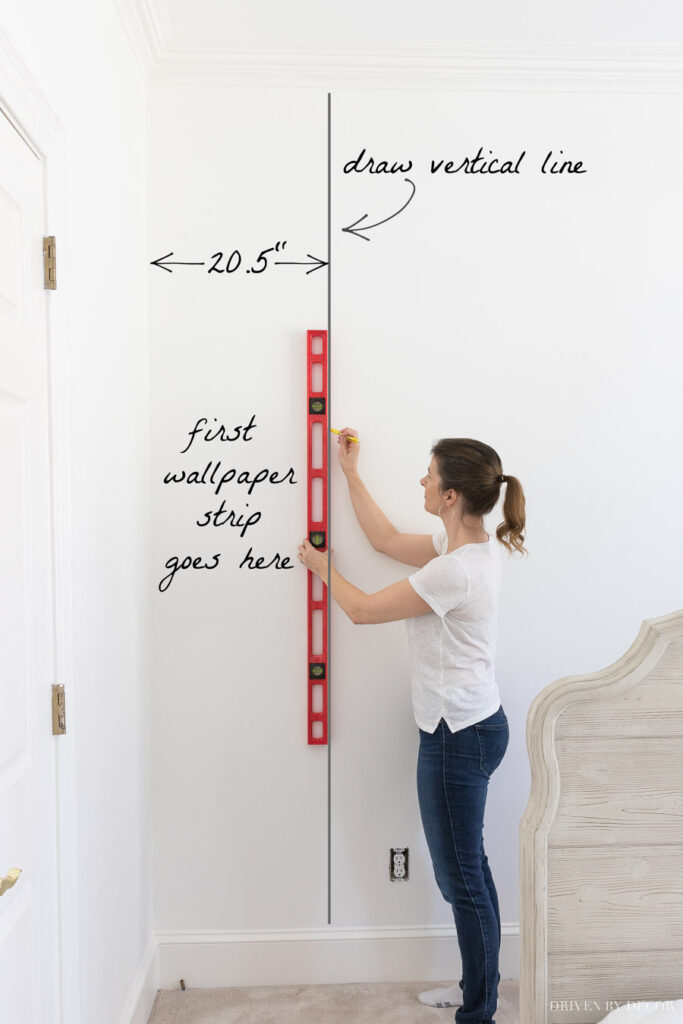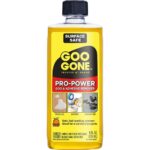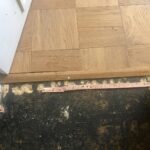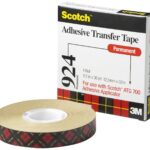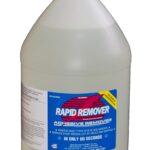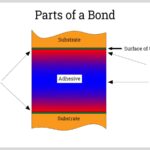Hanging adhesive wallpaper is a great way to quickly and easily give any room a makeover. To get started, you will need to prepare your walls. Make sure to clean the walls and remove any old wallpaper or paint. Once the walls are ready, measure the wall and cut the wallpaper to size. Next, you will need to apply the adhesive wallpaper to the walls.
Start in one corner, and begin to peel and stick the wallpaper to the wall. Make sure to align the edges with a ruler or level. Smooth out any bubbles or wrinkles with a cloth or brush as you go. Once the adhesive wallpaper is up, you will need to trim off any excess at the corners and edges. Use a sharp craft knife to make sure the edges are clean and smooth. Finally, you can use a sealer to protect the wallpaper and make it more durable. This will also help the wallpaper last longer. Hanging adhesive wallpaper is a great way to quickly and easily update any room. With the right preparation and a bit of patience, you can create a beautiful new space in no time.
How to fix self adhesive wallpaper
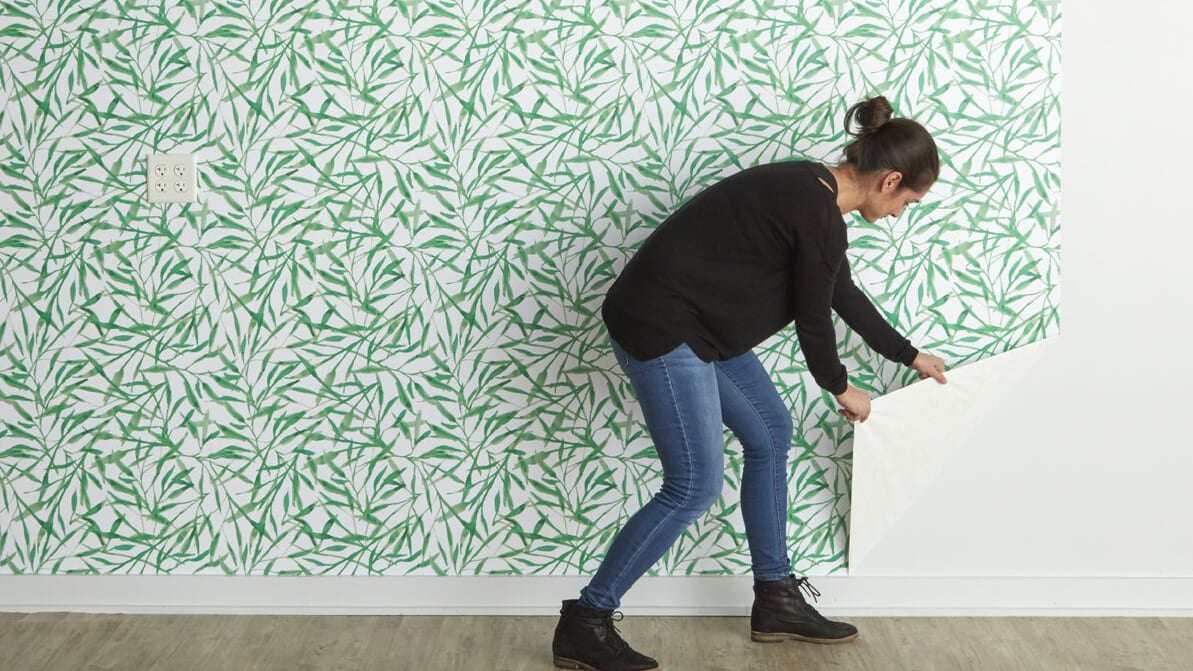
Before you begin, make sure that you have the right tools and materials needed. First, you will need to measure the wall and make sure there are no imperfections. Clean the wall and allow it to dry before applying the wallpaper. Next, you will need to cut the wallpaper to the correct size. You should always add a few inches extra to make sure the wallpaper fits correctly.
Once the wallpaper is cut, you can begin fixing it. Peel back a few inches of the backing paper and carefully apply the wallpaper to the wall. Smooth out any air bubbles with a soft cloth, making sure it sticks firmly to the wall. Continue to apply the wallpaper until the entire wall is covered. After it is hung, you can use a damp cloth to wipe away any excess glue. This will ensure that the wallpaper is securely in place and give your room a perfect new look.
How do you fix peel and stick wallpaper?
Peel and stick wallpaper is especially easy to install. However, if something goes wrong during installation, here’s how to fix it. If you have misaligned or detached pieces, you can usually peel them off and reposition them. Start by making sure the wall is free of dust and dirt, then press the wallpaper firmly onto the wall and smooth out any wrinkles or lumps. If there are gaps between the pieces, try using a wallpaper seam roller to get the paper to adhere to the wall.
You can also use a damp sponge to make sure the edges are sealed. If the adhesive isn’t strong enough, use wallpaper paste to give the paper extra grip. This will also help if you’re hanging on a textured surface. For any stubborn wrinkles or air bubbles, use a flat tool like a plastic spatula to flatten them out. You can also use a pin to release any air bubbles, then smooth them out with the spatula. With these tips, you can easily fix any problem that might occur when hanging peel and stick wallpaper.
Can you Restick down wallpaper?
It’s easy to install and requires minimal tools, so it’s a great DIY project for anyone. One important thing you should consider when hanging adhesive wallpaper is if you need to be able to restick it down. It’s not always necessary, but sometimes due to shifting walls or changes in temperature, your wallpaper may start to come loose. If you need to restick down wallpaper, it’s fairly easy to do. You’ll need to apply strip of wallpaper adhesive along the edge of the wallpaper, and then press it firmly onto the wall.
Make sure that all of the air bubbles are pushed out and no gaps are left. If you have a corner or a seam along the two pieces of wallpaper, you’ll need to make sure that you press the wallpaper firmly in place, so that it will keep its shape. You may need to use a sponge or a brush to apply the adhesive and make sure no gaps are left. Overall, resticking down wallpaper is a great way to ensure that your wallpaper stays looking great for a long time. It’s a simple task that doesn’t require any advanced tools, so if you’re up for a DIY project, this is an easy one to tackle.
Can self adhesive wallpaper be removed?
Hanging adhesive wallpaper can be a great way to decorate your home and bring some life into any room. However, if you are worried about the process, or want to know if the adhesive wallpaper can be removed, then the answer is yes. Adhesive wallpaper is designed to be removable and re-applied multiple times. To hang adhesive wallpaper, you will need to first prepare the surface of the wall by cleaning it and making sure that it is free of any dust, dirt, or debris. You will then need to measure the area that you want to cover and cut the wallpaper to size.
Once you have all the pieces cut, you can apply the wallpaper to the wall using the adhesive backing. Make sure that the wallpaper is firmly secured and that the edges line up properly. It is important to have patience when hanging the wallpaper, as it is important to avoid any wrinkles in the paper. If you decide you want to remove the adhesive wallpaper, it can be done with relative ease. Depending on the quality of the glue used, you may be able to peel it off with your fingers or use a damp cloth to get the job done. You may also need to use a specialized adhesive remover to get the wallpaper off the wall. Overall, hanging adhesive wallpaper is an easy and affordable way to spruce up any room in your home. It is also a relatively simple process to remove the wallpaper if needed.
Why is my wallpaper peeling off?
If your wallpaper is peeling off, it is important to determine the cause before you begin. The most common reason why wallpaper may peel is that the wall surface wasn’t adequately prepared with the proper primer before hanging. Applying an oil-based primer to the wall is important to ensure the wallpaper will adhere properly. Another reason why adhesive wallpaper can peel is that you didn’t properly prepare the wallpaper for application. Make sure the wallpaper is cut correctly to the appropriate size, and let it soak in water before you begin hanging it.
Additionally, adhesive wallpaper won’t stick to a wall that has any grease or dirt, so it’s important to clean the wall thoroughly before you start. If your wallpaper is already peeling off, you’ll need to remove it and start all over again, making sure to properly prepare the wall and the wallpaper. With the right steps, your adhesive wallpaper will stay put and add a beautiful touch to your home.
How to apply Peel and stick wallpaper?
Peel and stick wallpaper is especially easy to apply and requires no extra equipment. To start, make sure the wall is clean, dry and free of dust and debris. If you have any existing wallpaper, make sure it is properly removed. Next, measure the wall you are applying the wallpaper to and cut the sheets to size. Peel the backing off of the sheets and align the edges of the wallpaper to the wall.
Place the wallpaper onto the wall and press it firmly from the centre outwards to ensure it sticks. Continue along the wall until the entire wall is covered. Use a smoothing tool to press down any air bubbles that may have formed. Make sure to press along any edges and seams of the wallpaper until it is firmly in place. When you have finished hanging your wallpaper, you can use a damp cloth to clean up any dirt or dust. Enjoy your new look wall!
What is the easiest way to hang wallpaper?
It requires few tools, and can be done alone without professional help. To begin, you’ll need a few basic tools: a wallpaper smoother, a sharp knife, a measuring tape, a pencil, and a level. Start by measuring the wall area where you want to hang the wallpaper. Cut out strips of wallpaper to size, and apply an adhesive to the back of the wallpaper. Make sure the adhesive is spread evenly and use the wallpaper smoother to flatten the paper.
Next, begin hanging the wallpaper strips, starting at the top of the wall. Make sure to keep the strips aligned and level as you go. Once each strip is in place, use the wallpaper smoother to press it firmly to the wall. Finally, trim the excess wallpaper with the sharp knife, and your wallpaper is ready to enjoy. Following these steps is the easiest way to hang adhesive wallpaper.
How to apply allevyn adhesive?
To ensure that the wallpaper stays securely in place, you should use Allevyn Adhesive. Applying Allevyn Adhesive is a simple process and can be done in a few simple steps. First you’ll need to make sure that the wall is clean and dry. Ensure that there are no bumps, ridges or gaps. Once the wall is prepped, you can begin to apply the Allevyn Adhesive.
Using a brush, apply a thin layer of the adhesive to the wall. Make sure to get a good coverage and use a straight, even line. Next, you need to allow the adhesive to dry completely. This should take no more than 30 minutes. Once the adhesive is dry, you can start to hang the wallpaper. Start from the top corner and work your way down. Use a wallpaper brush or squeegee to smooth out any air bubbles and make sure that the wallpaper has adhered to the adhesive. That’s it! With Allevyn Adhesive, you can quickly and easily hang wallpaper in any room of your home.
How to install unpasted wallpaper?
Before starting, make sure you have all the necessary tools and supplies including wallpaper, wallpaper paste, a pasting brush, a seam roller, and a damp cloth. Begin by measuring and cutting the wallpaper to the appropriate size. Make sure to leave at least 1 inch of extra wallpaper around the edges that can be trimmed later. Now is a good time to match up the pieces of wallpaper and ensure that the patterns match. Once the wallpaper pieces are cut, apply wallpaper paste to the back of the paper with a pasting brush.
Make sure to cover the entire back of the paper and be generous with the paste. Next, hang the wallpaper on the wall. Make sure to start from the top left corner and smooth out any air bubbles with a seam roller. Use a damp cloth to remove excess paste when finished. Finally, trim off the extra wallpaper around the edges and enjoy your new wallpapered wall!
How to install self adhesive vinyl wallpaper
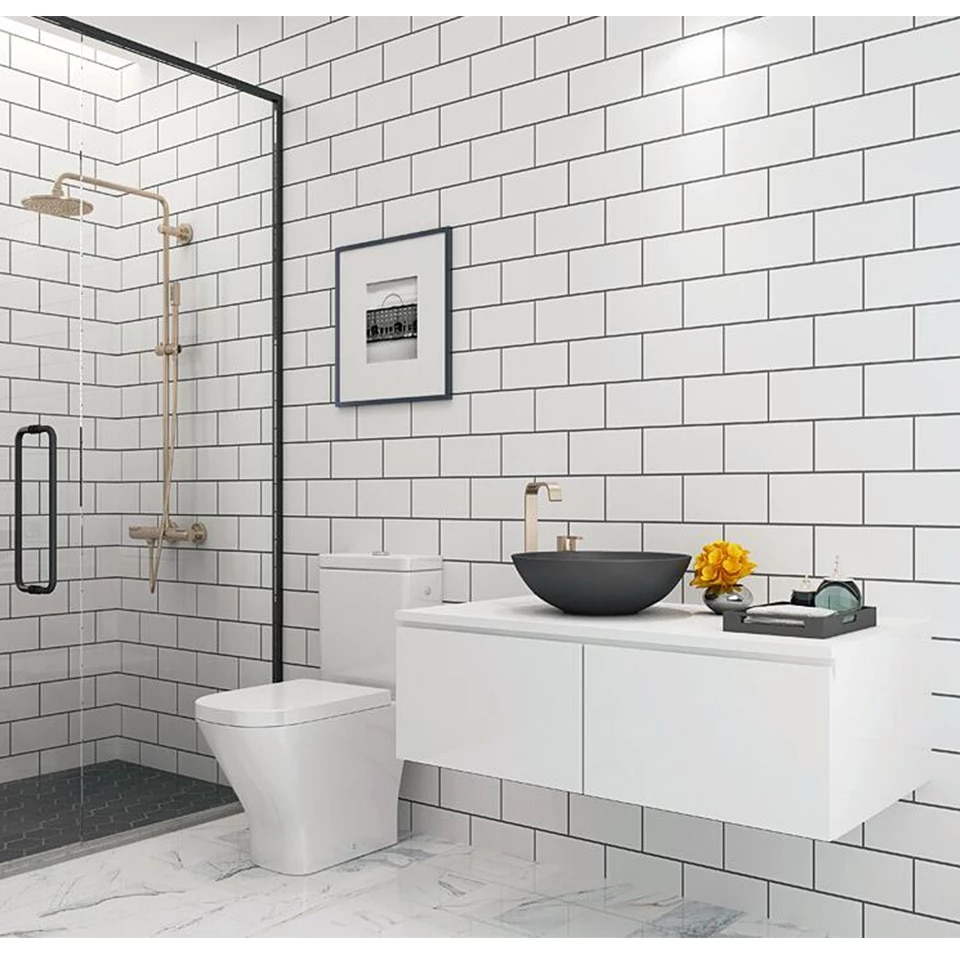
Here are the steps to follow to successfully install it:
- Start by cleaning and preparing the wall surface and smoothing it down with fine sandpaper.
- Measure the wall to determine the appropriate amount of wallpaper to purchase.
- Measure and cut the wallpaper to the desired size, ensuring that you leave a few inches of extra material on each side.
- Peel off the backing of the adhesive vinyl wallpaper and apply it to the wall, starting from the top and working your way down.
- Use a wallpaper roller to press the wallpaper into the wall, making sure that all air bubbles are removed.
- Finish off with a brush to ensure the wallpaper is fully adhered to the wall. Once these steps are followed correctly, you should have a beautiful and long-lasting self adhesive vinyl wallpaper installation.
How to install prepasted wallpaper?
Start by measuring the wall you will be covering and purchase enough wallpaper to cover the area. Make sure to add a few extra inches just to be safe. Once you have the right amount of wallpaper, the next step is to prepare the wall. Carefully remove any hardware, such as nails, screws, and molding. If the wall is not in perfect condition, you may want to fill in any holes with spackle or joint compound.
Once the wall is prepped, it is time to install the wallpaper. With pre-pasted wallpaper, you will just need to add water in order to activate the adhesive. Start in one corner of the wall and apply the wallpaper with a damp sponge. Be careful to smooth out any bubbles and be sure to line up the pattern, if there is one. The last step is to trim off any excess wallpaper. Use a sharp razor blade and a straight edge to get a clean, finished look. Once the excess is removed, you have successfully installed pre-pasted wallpaper!
How to install Peel and stick wallpaper?
The first step is to measure your walls and determine how much wallpaper you need. Next, you need to prepare your walls by removing any existing wallpaper or debris, and then clean the walls to ensure a smooth surface. Now it’s time to start hanging the wallpaper! Start with the longest wall and line the top edge of the wallpaper with the ceiling. Peel back the backing paper on the adhesive side of the wallpaper and press gently onto the wall. Continue this process until the entire wall is covered.
To make sure the seams between strips of wallpaper line up correctly, use a wallpaper smoother. Once all the walls are done, you need to trim off any excess wallpaper. Finally, you can enjoy your newly transformed room! Installing adhesive wallpaper is a relatively easy process that can add style to your home in no time.
What is the easiest wallpaper to hang?
Hanging adhesive wallpaper is one of the easiest ways to give a room a brand-new look and feel. Adhesive wallpaper is a great option since it doesn’t require any additional paste or water. All you need to do is peel off the backing and stick the paper onto the wall. Adhesive wallpaper is especially easy to hang because it is pre-pasted and self-adhesive. This means that all you need to do is smooth the paper onto the wall and it will adhere.
It also means that the wallpaper won’t come off easily or wrinkle, like with traditional wallpaper. When it comes to choosing adhesive wallpaper, there are many types to choose from. Some are made from vinyl or PVC, while others are made from fabric or paper. No matter what type of adhesive wallpaper you choose, it should be easy to install. One of the easiest types of adhesive wallpaper to hang is prepasted wallpaper. This type of wallpaper comes with a pre-applied adhesive that makes it easy to apply directly to the wall. All you need to do is wet the backing and then press the wallpaper firmly onto the wall. It’s also easy to remove if you decide to change the look of the room. Overall, adhesive wallpaper is one of the easiest types of wallpaper to hang. It is pre-pasted and self-adhesive, meaning that all you need to do is peel off the backing and stick the paper onto the wall. Prepasted wallpaper is especially easy to hang since it comes with a pre-applied adhesive. No matter which type of adhesive wallpaper you choose, it should be easy to install and give your room a brand-new look.
Is wallpaper easy to install?
Hanging adhesive wallpaper is not as hard as it might seem. If you have the right tools, it can be a simple and straightforward process. The first step is to prepare the wall – make sure it is clean and free of dust and dirt. Next, measure out the wallpaper and cut it to size. Then, use the adhesive to stick the wallpaper to the wall.
If there are any bubbles or creases in the paper, you can use a roller or a squeegee to press them down. Finally, trim the edges of the wallpaper and you are done. Installing wallpaper with adhesive is much easier than with traditional paste, so you don’t need to worry about it.
How to put on self adhesive wallpaper
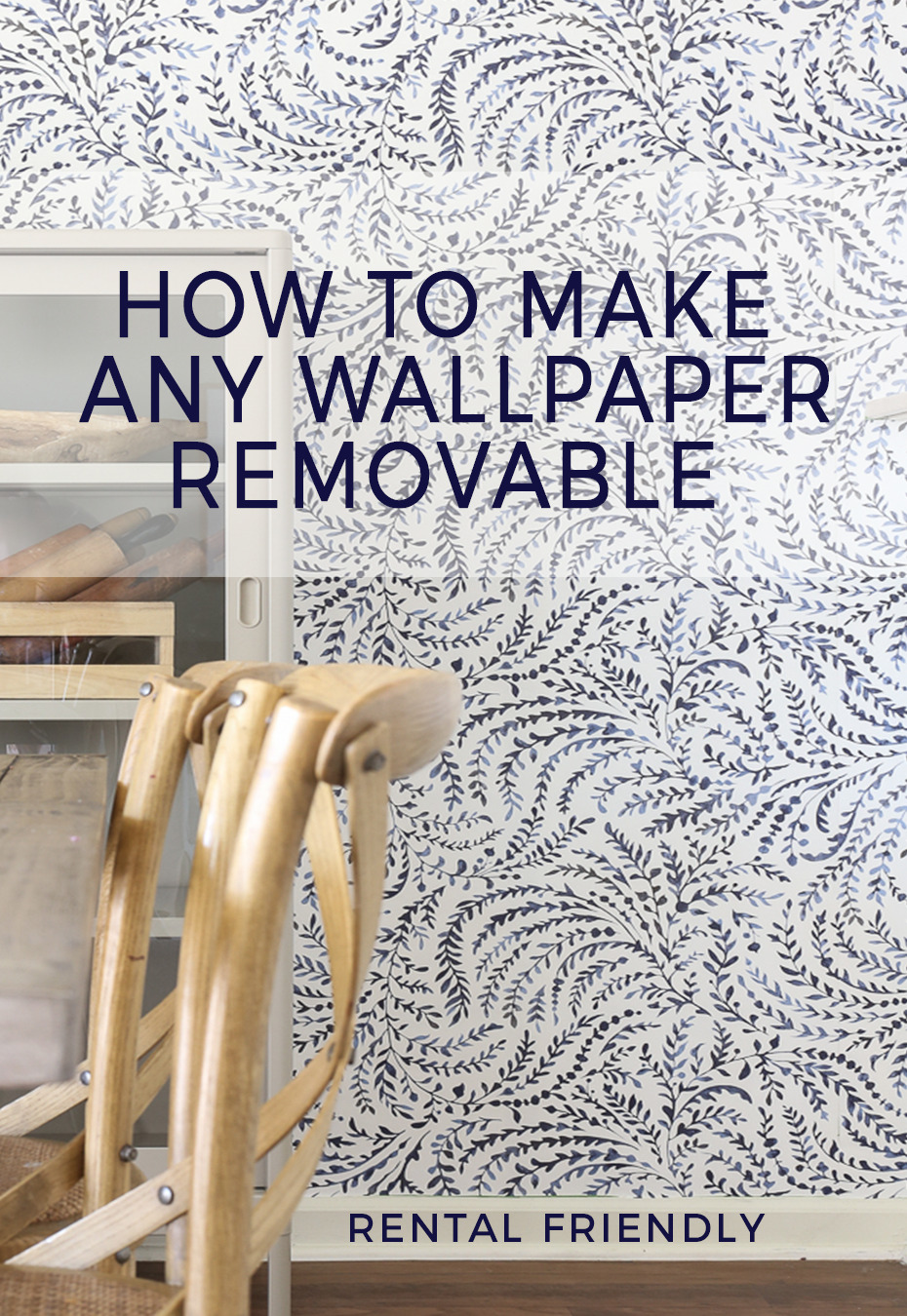
Here is a step-by-step guide to help you hang adhesive wallpaper correctly.
- Start by measuring the wall and cutting the wallpaper to size. Make sure to add a few inches of extra wallpaper to account for any slips while putting it up.
- Start by peeling off the backing from the first piece of wallpaper. Once the backing is removed, the adhesive side should be facing you.
- Line up the wallpaper along the top of the wall and press it firmly against the wall. Use a smoothing tool to press down the wallpaper and let the adhesive stick to the wall.
- Continue to hang the remaining pieces of wallpaper, making sure the pattern or design lines up. Once the wallpaper is up, you can use a sharp knife to trim off the edges.
- Finally, use a wet sponge to wipe away any excess glue or dirt. Your wallpaper should now be successfully hung!
What is the best way to apply peel and stick wallpaper?
Before you begin, make sure the wall surface is clean, dry, and free of any dust and debris. If the wall is freshly painted, wait at least three weeks before applying the wallpaper. To hang the wallpaper, start by measuring the wall and cutting the wallpaper to size. Cut the wallpaper in smaller strips and apply each strip individually. To attach each strip, remove the backing and press the wallpaper firmly against the wall.
Make sure to line up the patterns as you go. To smooth out any air bubbles or wrinkles, use a wallpaper smoothing tool or a wool roller. Once all the wallpaper is hung, trim off the excess with a sharp knife. With a bit of patience, you can easily hang peel and stick wallpaper and give your walls an instant facelift!
Why is my peel and stick wallpaper falling off?
Hanging adhesive wallpaper can seem like a daunting task, but it doesn’t have to be. Unfortunately, it is possible for peel and stick wallpaper to fall off. This can be caused by a number of factors. The walls may not be properly prepared, or the wallpaper adhesive may not be strong enough to hold it in place. Additionally, the wallpaper may not be applied properly – it is important to not apply too much force when mounting the paper, as this can cause the adhesive to come loose.
If the wallpaper is applied correctly, it is possible that the walls have too much moisture content, which can cause the wallpaper to come away from the wall. It is also important to note that the wallpaper should not be applied to a surface that has been previously painted, as this can reduce the adhesive’s ability to hold. Taking the necessary steps to properly prepare the walls and apply the wallpaper can help to ensure that the peel and stick wallpaper will stay in place.
Is peel and stick wallpaper hard to install?
To begin the installation process, you need to make sure that the walls are clean, flat and properly prepared. You should also measure the wall and cut the wallpaper strips according to the size needed. Once the wallpaper strips have been cut and the wall is prepared, you can begin to hang the wallpaper. Start by peeling off the backing from the first wallpaper strip and start from the top corner of the wall. Then press the wallpaper onto the wall firmly.
Continue in this way until the entire wall is covered. Ensure that the wallpaper is stuck firmly to the wall and that there are no gaps between the strips. Finally, use a smoothing tool to press all the edges and corners of the wallpaper strips, so that they are all properly adhered to the wall. This will help create a beautiful, seamless effect. Overall, hanging peel and stick wallpaper is not a difficult task. With a few simple steps and the right tools, you can easily install adhesive wallpaper in your home.
Is self adhesive wallpaper easy to install?
It’s a great way to add a unique design to your walls without having to use glue or paste. Hanging adhesive wallpaper is a simple process that can be done by anyone, regardless of experience level. To hang adhesive wallpaper, you’ll need to start by cleaning the wall and making sure it is completely dry. This will ensure the wallpaper adheres properly. You’ll also need to measure and cut the wallpaper to the right size before you start.
When you’re ready to apply the wallpaper, you’ll need to peel the backing off a small section at a time and line it up with the wall. Once you’ve applied the wallpaper, you can use a smoother to remove any air bubbles and make sure the wallpaper is secure. Lastly, you’ll need to trim the edges of the wallpaper and use a damp cloth to wipe away any excess adhesive. With these simple steps, you’ll be able to hang self adhesive wallpaper with ease.
Is peel and stick wallpaper hard to hang?
Hanging peel and stick wallpaper is generally quite straightforward. All you need is a few tools, some good preparation and a steady hand. To begin, make sure that the surface you are going to hang the wallpaper on is clean, dry and free of dust. This will ensure a secure bond between the adhesive and the wall. Cut the wallpaper to the necessary sizes and then peel off the backing.
It’s best to start in a corner and work your way around the room. If you are working with a patterned wallpaper, be sure to match the pattern up at the seams. When applying the wallpaper, use a wallpaper brush or a rubber roller to ensure a good bond. Take your time and go over the sections several times. Occasionally, you may need to use a wallpaper smoother to get rid of any bubbles. After you have finished hanging the wallpaper, leave it for a few hours for the adhesive to set properly. To finish, use a clean damp cloth to wipe down the wallpaper and smooth out any imperfections. Peel and stick wallpaper is a great choice for many DIY enthusiasts. With a bit of care and effort, you too can create a beautiful wall space with this type of wallpaper!
How to do self adhesive wallpaper
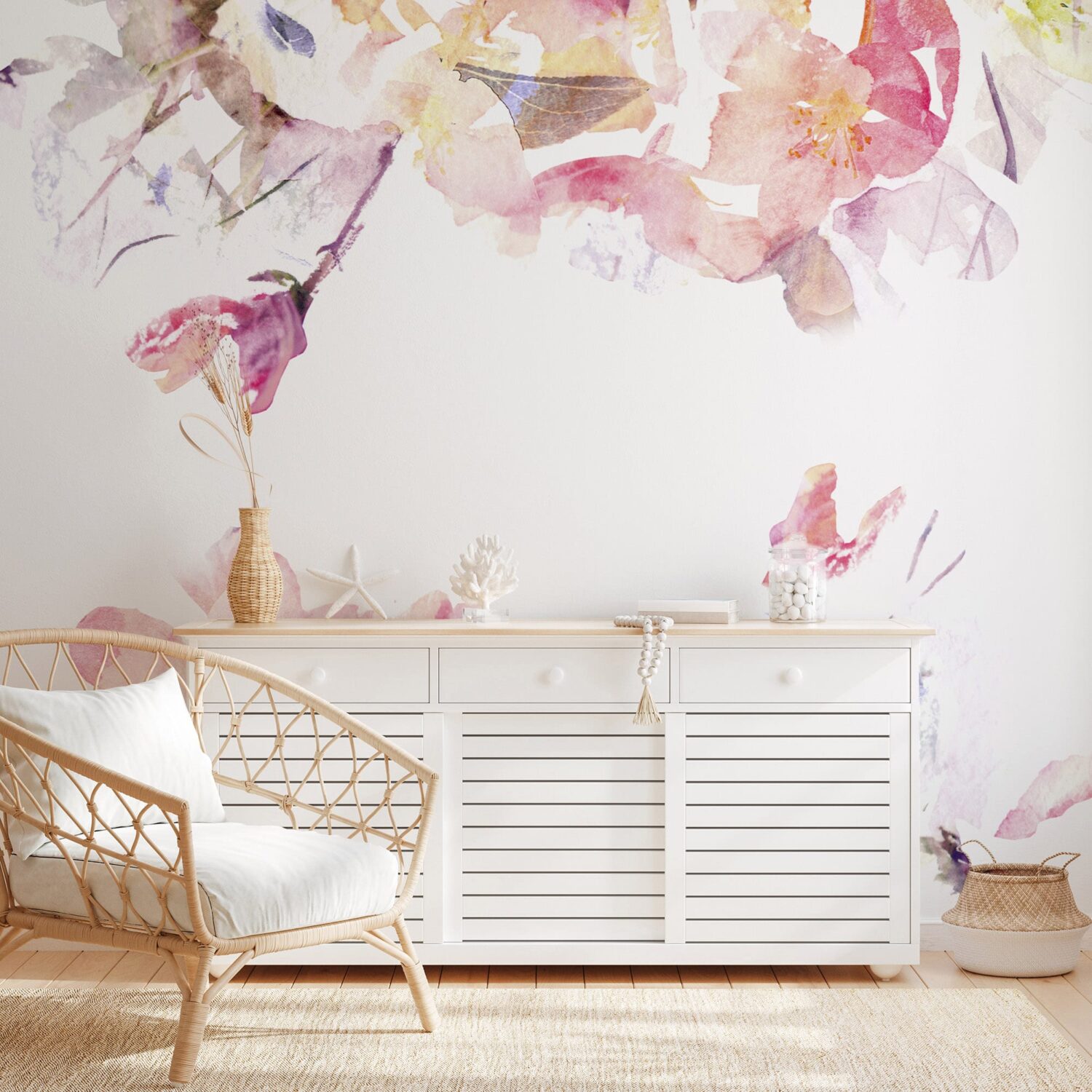
Hanging self-adhesive wallpaper can be a great way to add texture and colour to your home. It is a relatively simple process, but it does require a bit of patience and attention to detail. To begin, you’ll need to make sure that your walls are clean and free of dust, dirt, and other particles. You will also need to prepare the walls by applying a primer that is recommended for the type of adhesive wallpaper you are using. Once your walls are prepped and ready, you can begin to hang the self-adhesive wallpaper.
Cut the wallpaper to size and apply to the wall. Starting at the top, press the wallpaper firmly against the wall and then work your way down. Make sure that you smooth out any bubbles or wrinkles as you go. It is important to be careful when removing the backing from the wallpaper. To do this, slowly peel back the backing, starting from the top and working your way down. Once the backing is removed, press the wallpaper firmly onto the wall to ensure a secure seal. Finally, be sure to trim off any excess wallpaper from the edges of the wall. Once your wallpaper is all hung, you can sit back and enjoy the beautiful new look you have created for your home.
Is it easy to put up self-adhesive wallpaper?
Self-adhesive wallpaper is pre-pasted and can be hung without needing to use extra glue or paste. It is easy to put up and requires minimal effort. All you need to do is peel off the backing and stick it to the wall. You can create a neat and smooth finish by firmly pressing the wallpaper onto the wall and using a wallpaper brush or roller. To get an even finish you may need to trim off any excess wallpaper. Overall, self-adhesive wallpaper is a quick and easy way to revamp any room.
Is there a trick to peel and stick wallpaper?
Hanging adhesive wallpaper is relatively simple and quick, but it’s important to do it right to ensure a professional-looking finish. One of the key steps is to properly peel and stick the wallpaper. The best way to peel and stick the wallpaper is to begin from the top and slowly pull away the backing paper. This will help create a straight line for the first strip of wallpaper. Then, peel the top of the backing paper away from the sticky adhesive side and smooth the wallpaper onto the wall.
If there are any bubbles or creases, use a wallpaper brush or soft cloth to smooth them out. It’s important not to stretch the wallpaper or apply too much pressure, as this could damage the wallpaper or the wall. It’s also important to work quickly when hanging adhesive wallpaper, as it needs to be applied to the wall immediately before it can dry. Once the wallpaper is on the wall, you can use a ruler to cut away the excess paper and ensure a clean line. To sum up, there is no real trick to peeling and sticking wallpaper, but with a few simple steps, you can easily achieve a professional-looking finish. Just remember to take your time and be gentle, and you should be able to hang your wallpaper with ease!
How to apply selfadhesive wallpaper
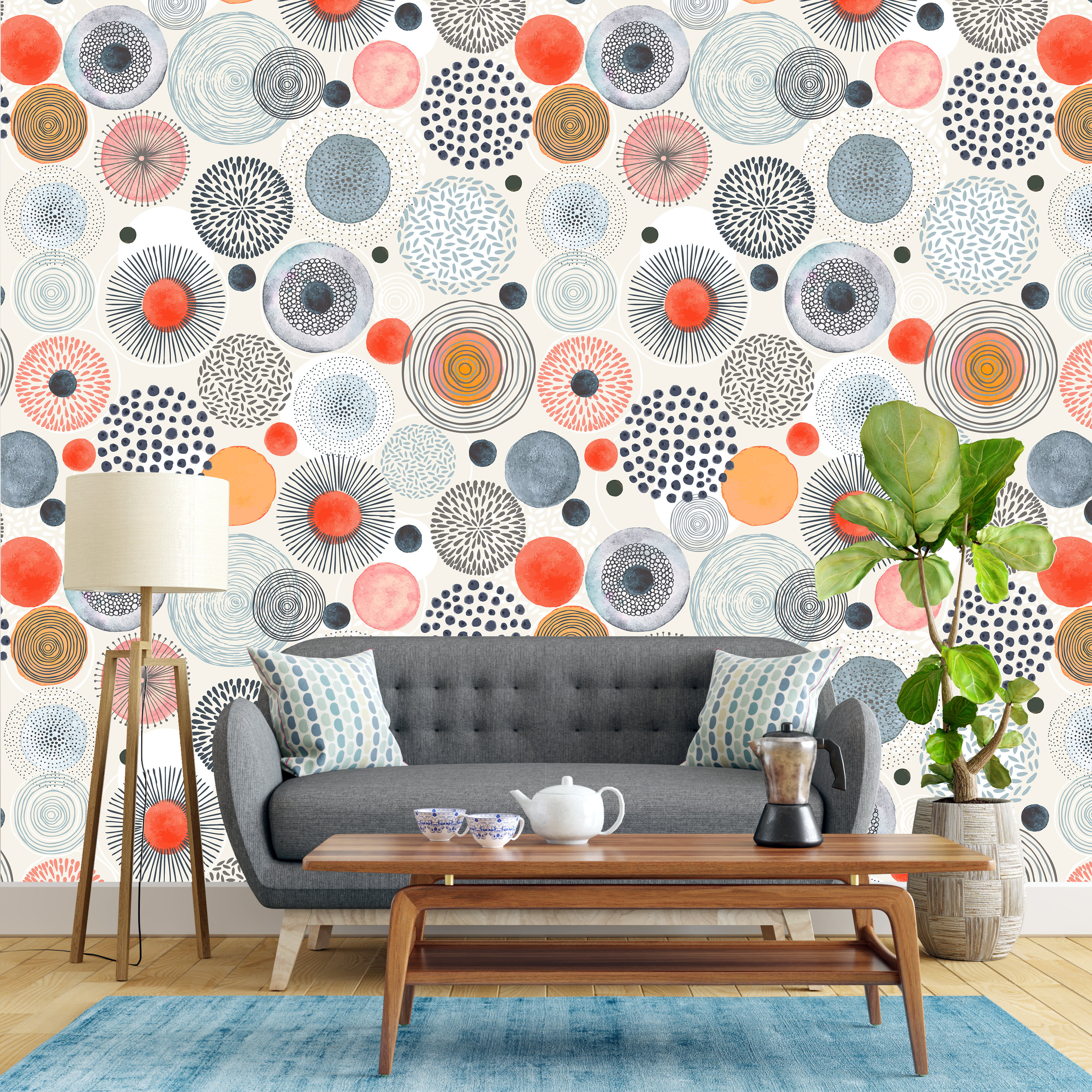
First, prepare the wall by wiping it clean and filling any holes or cracks. If the wall is uneven, you can use sandpaper to make it more even. Next, measure the wall where the wallpaper will be applied, and cut the wallpaper accordingly. Once the wallpaper is cut to size, peel away the backing paper and place the adhesive side on the wall. Carefully press the wallpaper onto the wall, and use a ruler or straight edge to flatten out any wrinkles.
Make sure to press the edges down firmly as well. Finally, use a sharp blade to trim away any excess wallpaper. If you find any bubbles, you can use a needle to puncture them and then press the paper down to get rid of them. You should now have a beautiful new wallpaper in your home.
How do you prepare a wall for self-adhesive wallpaper?
Preparing your wall is an important step to ensure the wallpaper adheres properly and lasts for the years to come. Before beginning, it is important to inspect your wall for any cracks or other imperfections. If found, these should be filled in and sanded down to create a smooth surface. You should also clear the wall of any dust or debris, and then wipe the wall down with a damp cloth to remove any remaining dust particles. It is best to use a mild detergent such as dish soap to clean the wall as well.
Once your wall is properly prepared, you can then begin hanging your self-adhesive wallpaper. Make sure to measure the wall before you begin so you know how much wallpaper you will need. Start at the top and work your way down, paying attention to align the wallpaper with any pattern or design. Finally, use a wallpaper smoothing tool to press down any air bubbles and ensure the wallpaper is properly adhered.
Is self-adhesive wallpaper easy to hang?
Hanging self-adhesive wallpaper is easy and can be done with minimal effort. To begin, ensure that the wall surface is completely smooth and free of dust, grease, and other materials. Then, measure the wall and cut the wallpaper to size, leaving a small gap around the edges. Once the wallpaper is cut, peel off the backing paper and apply the sticky side to the wall. Starting from the top of the wall, press the wallpaper firmly onto the wall, smoothing out any air bubbles with a soft cloth. Once you’ve reached the bottom of the wall, cut away any excess wallpaper and use a sharp knife to ensure a clean edge. With a little bit of patience, you can easily hang self-adhesive wallpaper and give your room a stunning, new look.
How do I make sure peel and stick wallpaper stay on?
Hanging adhesive wallpaper can seem daunting, but it is not as difficult as it appears. When hanging adhesive wallpaper, the key is to use the correct procedure to make sure that your wallpaper will stay on the wall. First, you should make sure the walls are clean and dry before you start. Any dirt or dirt on the wall will prevent the adhesive from sticking properly. You should also try to remove any bubbles or bumps in the wall that could interfere with the adhesive.
Next, measure and cut the wallpaper to the size of the wall. The wallpaper should be cut as close to the edge of the wall as possible. You should also use a level to make sure it is evenly applied to the wall. You can then begin to apply the wallpaper to the wall. Start at the top and slowly peel off the backing as you go down the wall. Make sure that you press the wallpaper firmly onto the wall and smooth out any air bubbles. After the wallpaper is applied, you should use a roller to make sure it is firmly attached to the wall. The pressure from the roller will help ensure that the adhesive sticks to the wall and prevents the wallpaper from peeling away. Following these steps will help ensure that your peel and stick wallpaper stays firmly in place. With the right amount of preparation and care, you will have successfully hung your wallpaper and it will look great for years to come.
Self adhesive wallpaper how to apply
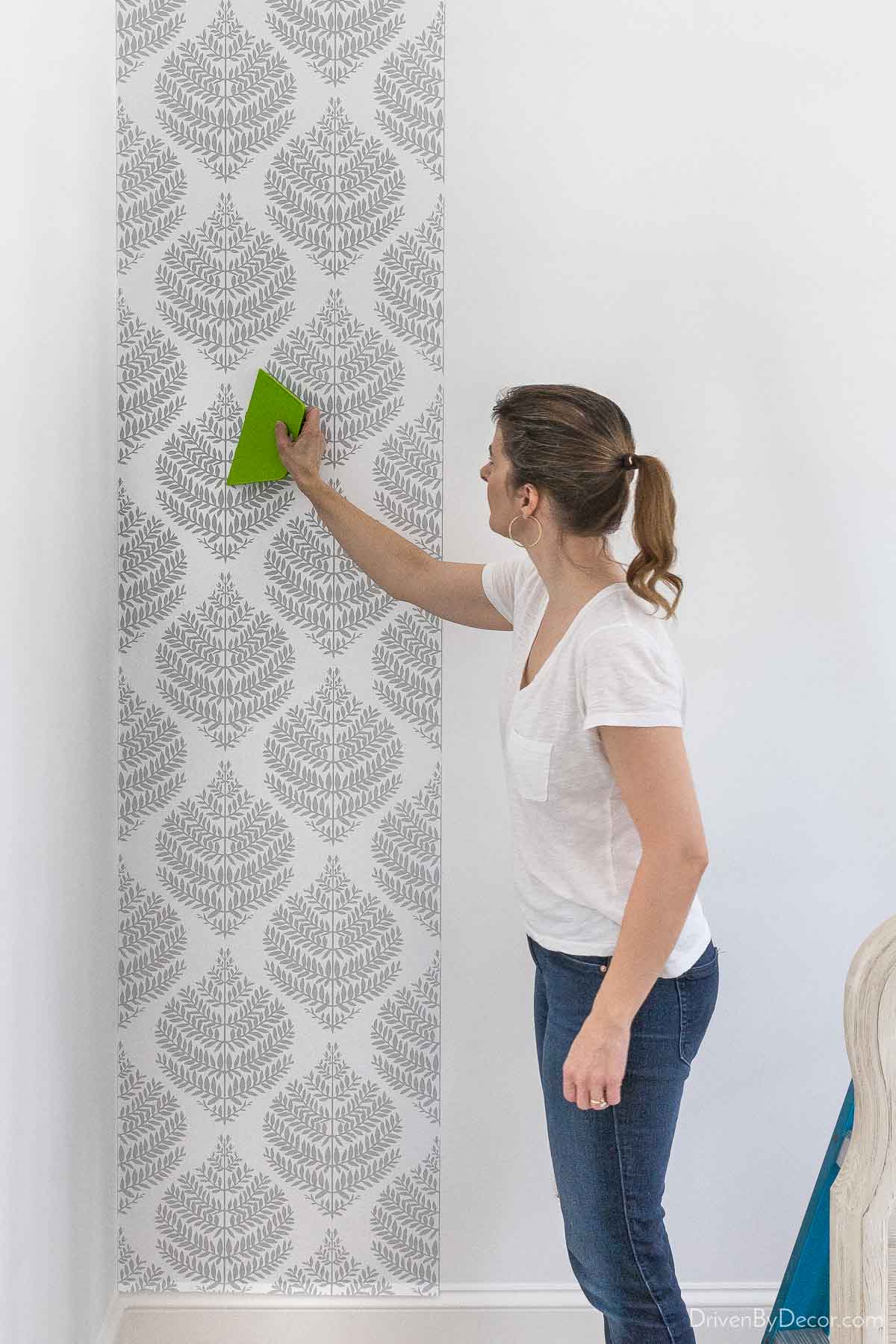
Here is a step-by-step guide on how to hang adhesive wallpaper:
- Firstly, clean and prepare the wall to make sure it is free from dust and dirt.
- Measure the length and width of the wall to determine how many rolls of adhesive wallpaper you need.
- Cut the adhesive wallpaper to the desired size with a sharp scissors.
- Peel off the backing paper from one end of the wallpaper and start from the top of the wall.
- Press the wallpaper down firmly as you go, starting from the middle and working your way out.
- Finally, use a damp cloth to smooth out any air bubbles or bumps. Hanging adhesive wallpaper is an easy and budget-friendly way to spruce up any room. Follow these steps for a perfect finish and enjoy your new look!
Should you overlap peel and stick wallpaper?
When it comes to hanging adhesive wallpaper, one of the most popular techniques is overlapping the peel and stick wallpaper. This can provide a seamless look to your wallpaper, as well as helping to hide any imperfections in your wall. Before you begin overlapping, make sure that you have stuck all of the wallpaper pieces firmly to the wall, with no air bubbles present. You should also make sure that you line up each piece as accurately as possible. When you start overlapping the wallpaper, you should begin with the two side edges.
Make sure you overlap them as neatly as possible. You can also use a ruler and a level to keep the edges straight. Once the edges have been overlapped, you can begin overlapping the other pieces. Make sure to overlap the pieces by the same amount, so that the wallpaper looks uniform. You should also start each piece from the same edge of the overlap, so that the pattern looks even. Finally, you should use a sharp utility knife to cut off any excess wallpaper that may be present. This will ensure that the wallpaper looks neat and tidy when it is finished. Overall, overlapping peel and stick wallpaper is a great way to hang adhesive wallpaper. With a few simple steps and a bit of patience, you can create a neat and seamless look for your wallpaper.
How do you get peel and stick wallpaper to stay on?
Hanging adhesive wallpaper is becoming an increasingly popular way to quickly decorate a room. Peel and stick wallpaper is easy to use, but getting it to stay on can be tricky. First, make sure the walls are clean and dry before you start. Dust and dirt can prevent the adhesive from sticking. You’ll also want to make sure the wallpaper is cut properly to fit the wall.
To apply the wallpaper, begin at the top of the wall and peel the backing away from the adhesive. Use a plastic smoother to flatten out any bubbles or folds. Once the wallpaper is down, use a wallpaper brush to press the adhesive firmly against the wall. At the seams, you’ll want to use a seam roller to press down the edges where the two pieces of wallpaper meet. This will help create a seamless look. To finish, you’ll want to use a utility knife to trim any excess, being careful not to cut into the wallpaper. By following these steps, you should have no problem getting your peel and stick wallpaper to stay on.
Do I need primer for peel and stick wallpaper?
But before you start installing the wallpaper, you may be wondering if you need to use primer. The short answer is that you usually don’t need to use primer for peel and stick wallpaper. This type of wallpaper has an adhesive backing that allows it to stick directly to the wall without the need for primer. However, there are some exceptions. If you have glossy walls, it’s recommended that you apply a special primer designed for slick surfaces before installing the wallpaper.
This helps the wallpaper to stick more securely and reduces the chance of the paper bubbling or peeling over time. You may also want to use a primer if you’re planning to paint over the wallpaper. Make sure to use a primer that will allow the paint to adhere to the wallpaper. To sum it up, primer isn’t always necessary when hanging adhesive wallpaper. But if you have glossy walls, need to paint over the wallpaper, or just want to ensure the best results, you may want to apply a special primer before installing the wallpaper.
